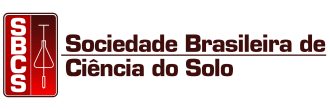
HIGHLIGHTS
SVM outperforms PLSR for sediment source modeling, showing higher R² and lower RMSE.
SGD pre-processing significantly improves SVM models, while PLSR benefits from SNV.
UV-VIS spectra were less effective for source tracing compared to NIR and MIR.
Reducing sediment sources enhances model reliability and decreases uncertainties.
ABSTRACT
Agriculture intensification in Southern Brazil’s subtropical regions combined with the frequent occurrence of erosive rainfall has rendered the area a global water erosion hotspot. In this scenario, understanding and regulating erosion processes at the river catchment scale is critical for mitigating soil and water resource degradation. Traditional methods for tracing sediment sources are expensive and time-consuming and justify the development of alternative approaches. Therefore, in this study, we employed diffuse reflectance spectroscopy analyses in the ultraviolet-visible (UV-VIS), near-infrared (NIR), and mid-infrared (MIR) ranges, combined with multivariate models and spectral pre-processing techniques to estimate sediment source contributions in a homogeneous subtropical catchment (Conceição River, 804 km²). Soil samples (n = 181) were collected to characterize the four potential sediment sources, including: cropland (n = 78), stream bank (n = 36), unpaved road (n = 40) and pasture (n = 27). Moreover, 44 sediment samples were collected, including suspended sediment (n = 8), fine sediment deposited on the riverbed (n = 15), and suspended sediment samples collected in the water column during storm events (n = 21). Vector machine (SVM) model outperformed the others, with better accuracy and reliability. While UV-VIS spectra proved less effective due to soil homogeneity across the catchment, NIR and MIR spectra provided valuable information for discriminating sediment sources. Furthermore, reducing the number of potential sources (from four to three or two) improved model predictions, especially when distinguishing between surface sources (cropland and pasture) and subsurface sources (unpaved roads and stream banks). The study’s findings shed light on the power of efficient and cost-effective alternative methods for assessing sediment sources, which are vital for promoting effective erosion control and sustainable land management in similar regions.
No tags for this post.



